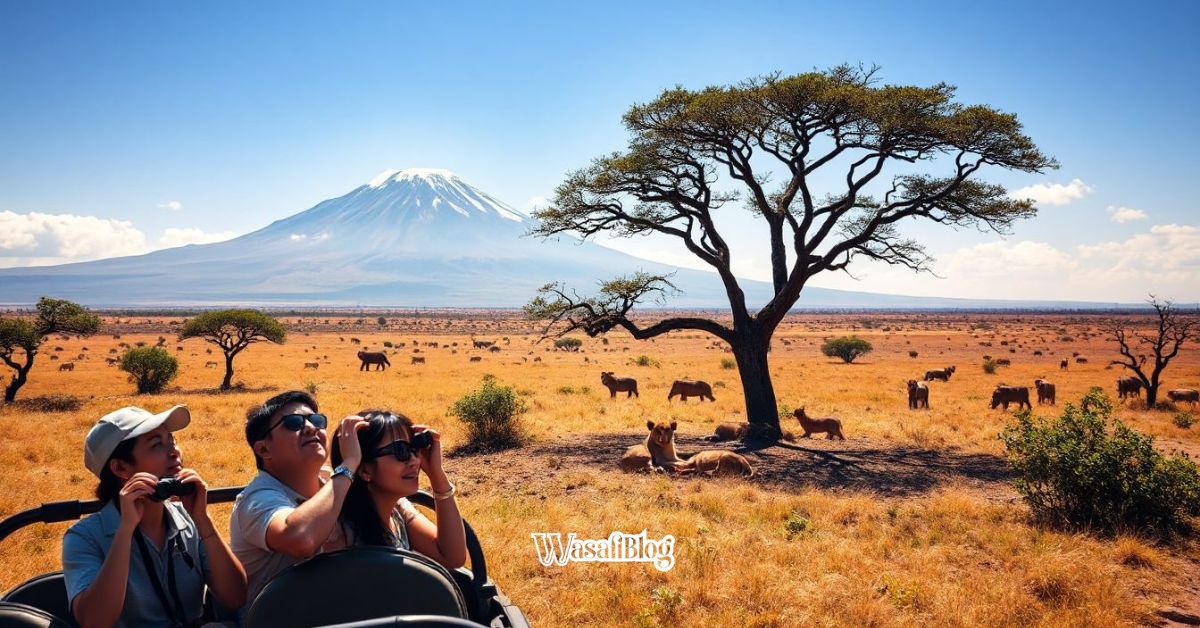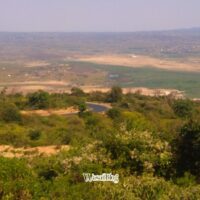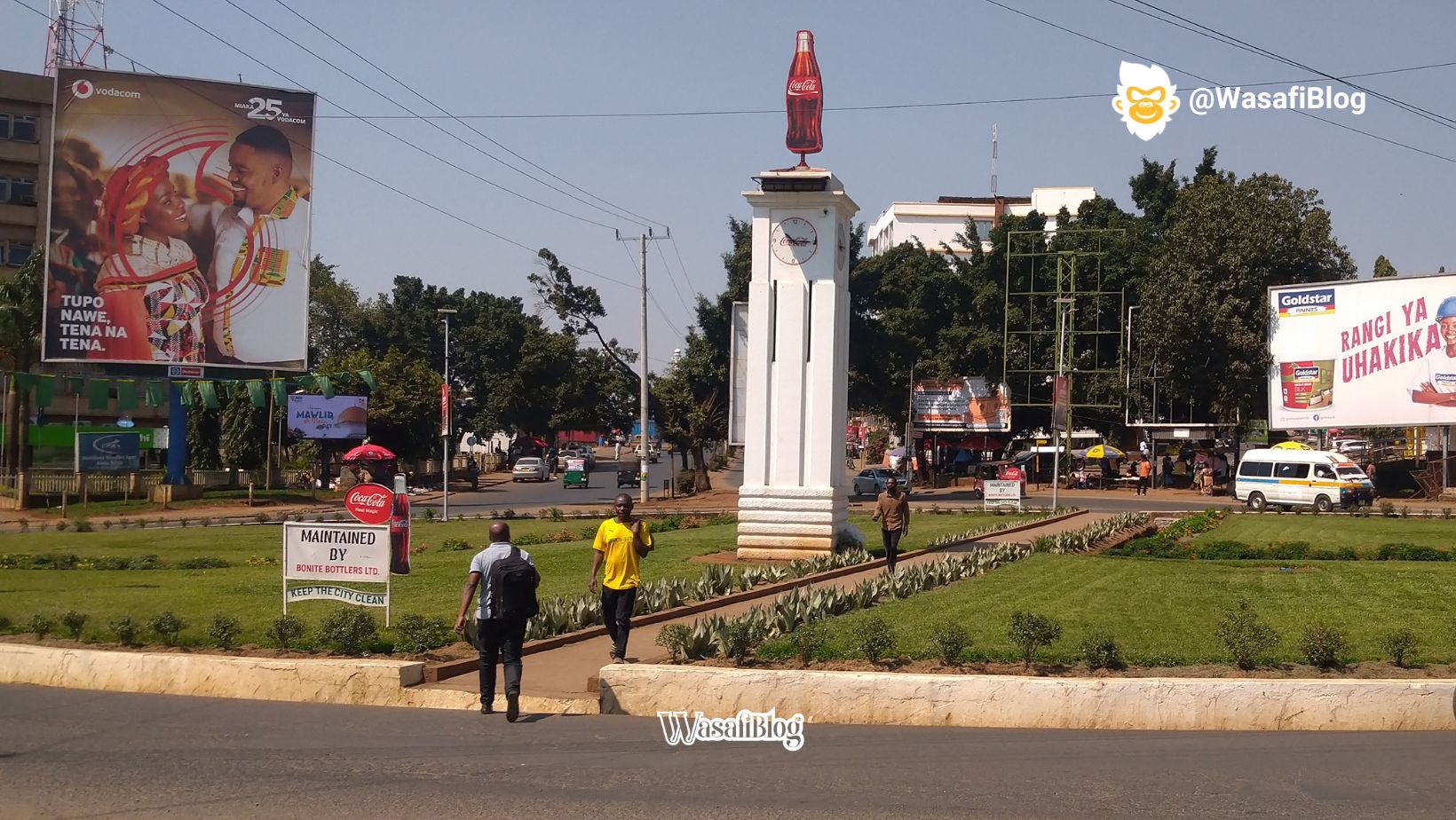Tanzania, a land of breathtaking landscapes and unparalleled biodiversity, beckons travelers with its legendary wildlife. From the vast plains of the Serengeti to the Ngorongoro Crater’s unique ecosystem, planning a safari in Tanzania offers an immersive experience into the heart of Africa’s natural wonders. Choosing which national park to visit can be a daunting task, with each offering a distinct and unforgettable adventure.
This guide will navigate you through the top national parks in Tanzania, highlighting what makes each one a must-see destination for any wildlife enthusiast.
Prepare to discover the iconic Great Migration, the ancient allure of chimpanzee trekking, and the serene beauty of Tanzania’s protected areas.
Serengeti National Park: The Epicenter of the Great Migration
The Serengeti stands as Tanzania’s most famous national park. It draws visitors from all corners of the globe. This vast park offers an unmatched safari experience, truly a highlight of any Tanzanian wildlife trip. You will find endless plains teeming with animals.
The Great Migration Phenomenon
Imagine millions of wildebeest, zebras, and gazelles moving across the landscape. This is the Great Migration, one of nature’s greatest shows. This annual journey sees animals following rainfall and fresh grazing.
Their path often takes them from the southern Serengeti into Kenya’s Masai Mara and back. Witnessing river crossings, where crocodiles lie in wait, is an intense experience. The migration ensures life for predators and a truly wild spectacle for you.
Abundant Big Five and Other Wildlife
The Serengeti boasts an incredible density of wildlife. You can spot all of the “Big Five” here: lions, leopards, elephants, rhinos, and buffalo.
Lion prides are common, often resting openly or stalking prey. Cheetahs chase gazelles across the plains.
This park is also home to giraffes, hippos, and over 500 bird species. Every game drive brings new surprises.
Top Safari Activities in Serengeti
Game drives are the main activity in Serengeti National Park. You can enjoy both day and night drives, offering different animal sightings.
Consider a hot air balloon safari for a stunning bird’s-eye view of the plains at sunrise. Walking safaris provide a closer look at smaller creatures and the ecosystem.
The best time to visit often depends on your interest in the Great Migration. For the dramatic river crossings, aim for July to October.
Ngorongoro Conservation Area: The Eighth Wonder of the World
The Ngorongoro Conservation Area is truly unique among Tanzania’s national parks. It is a UNESCO World Heritage Site. Many call it the “Eighth Wonder of the World.” This area protects an ancient caldera filled with incredible wildlife.
The Ngorongoro Crater: A Natural Amphitheater
The Ngorongoro Crater formed from a massive volcanic eruption ages ago. Now, it’s a huge, intact caldera. This natural enclosure acts like a giant animal sanctuary. Animals find everything they need inside: water, food, and shelter.
This means you will see a high density of animals in a relatively small area. Wildlife viewing here is simply superb.
Rare Sightings and Diverse Habitats
Within the crater, you might be lucky enough to see the endangered black rhinoceros. It is one of the best places in Tanzania to spot this rare animal.
The crater floor has many different habitats. There are grasslands, swamps, and even a soda lake. These support diverse animals like hippos, flamingos, and various antelope species. Zebras and wildebeest graze alongside lions and hyenas.
Conservation Efforts and Local Communities
Ngorongoro is not just a national park; it’s a conservation area. This means the local Maasai people live alongside the wildlife. They graze their livestock here, carrying on their traditions.
This unique setup shows a balance between human life and nature. Strict conservation rules protect this delicate ecosystem for future generations.
Tarangire National Park: Land of Giants
Tarangire National Park is a hidden gem on the northern safari circuit. It is famous for two things: its massive elephant herds and its iconic baobab trees.
If you love elephants, this park is a must-see. It feels wilder and less crowded than some other parks.
Encountering Massive Elephant Herds
Tarangire boasts one of the largest elephant populations in Tanzania. During the dry season, thousands of elephants gather along the Tarangire River.
This river is the park’s only permanent water source. Seeing so many of these gentle giants in one place is an amazing sight. Babies follow their mothers, and bulls spar playfully.
The Iconic Baobab Trees and Birdlife
The park’s landscape is dotted with ancient baobab trees. These “upside-down trees” create a striking backdrop for your safari photos. They are often called the “tree of life” by local people.
Tarangire is also a paradise for bird watchers. Over 550 bird species call this park home. You might spot colorful hornbills, majestic eagles, or tiny lovebirds.
Dry Season Safari Highlights
Visiting Tarangire during the dry season, from June to October, is especially rewarding. As water sources elsewhere dry up, animals flock to the Tarangire River.
This makes wildlife viewing incredibly easy. You’ll see large herds of elephants, zebras, wildebeest, and various antelope. Predators like lions and leopards also gather near the river, making for exciting encounters.
Kilimanjaro National Park: Summiting Africa’s Highest Peak
Kilimanjaro National Park is known worldwide for one reason: Mount Kilimanjaro. This majestic mountain is Africa’s highest peak and the world’s tallest free-standing mountain. While many come to climb, the park itself holds surprising biodiversity.
The Majesty of Mount Kilimanjaro
Mount Kilimanjaro is a dormant volcano with three cones: Kibo, Mawenzi, and Shira. Its snow-capped summit, Uhuru Peak, reaches an impressive 19,341 feet. Climbing Kilimanjaro is a lifelong dream for many.
There are several routes, each offering different challenges and scenery. The trek takes you through diverse environments.
Diverse Flora and Fauna on the Slopes
As you climb Kilimanjaro, you travel through several distinct ecological zones. You start in lush rainforests, home to various monkeys and colorful birds. Higher up, you enter moorland with unique plants. Then comes the alpine desert, a stark and beautiful landscape.
Finally, you reach the arctic zone, with ice and rock. Each zone has its own special plants and a few hardy animals.
Planning Your Kilimanjaro Climb
A Kilimanjaro climb needs careful planning. The best times to climb are during the dry seasons, from January to March and June to October.
You need good physical fitness and proper gear for changing weather. It is important to go with a reputable tour operator.
They will provide experienced guides and porters. This ensures your safety and improves your chances of reaching the summit.
Gombe Stream National Park: In the Footsteps of Jane Goodall
Gombe Stream National Park is a very special place in western Tanzania. It is not about the Big Five. It is about an intimate encounter with our closest relatives: chimpanzees. This park holds a key place in the history of wildlife research.
Chimpanzee Trekking: An Intimate Encounter
Visiting Gombe means going chimpanzee trekking. You hike through dense forest to find wild chimpanzee communities.
It is a thrilling experience to watch them interact, play, and groom in their natural home. The chimps here are habituated to humans, thanks to decades of research.
This allows for close, respectful observation. You’ll see their human-like behaviors firsthand.
The Research and Conservation Legacy
Gombe Stream National Park is famous because of Dr. Jane Goodall. She started her groundbreaking chimpanzee research here in 1960.
Her work taught the world so much about chimpanzee behavior and social structures. The research continues today, offering vital insights into conservation.
Protecting Gombe’s chimpanzees and their forest home is a top priority. This ensures their survival for future generations.
Beyond Chimpanzees: Other Wildlife and Scenery
While chimpanzees are the main draw, Gombe offers more. You might also spot other primates, such as olive baboons and red-tailed monkeys.
The park sits on the beautiful shores of Lake Tanganyika. This makes for stunning views and offers a chance for a refreshing dip after your trek.
The lush forest environment is vibrant with birdlife and unique plant species.
Planning Your Tanzanian Safari: Essential Tips
Planning a safari to Tanzania’s national parks is an exciting adventure. A bit of preparation makes all the difference. These tips will help you create a trip you won’t forget. Consider every detail for your journey.
Best Time to Visit
The ideal time for your Tanzanian safari depends on your goals. For the Great Migration in the Serengeti, target July to October.
For overall wildlife viewing, the dry season (June to October) is best across most parks. Animals gather around water sources, making them easier to spot.
If you want lush green landscapes and bird watching, the wet season (November to May) is also great, though some roads can be tricky.
Choosing Your Safari Operator
Selecting the right safari company is crucial. Look for operators with good reviews and a strong safety record. Check if they practice responsible tourism and support local communities.
A good operator will have experienced guides who know the parks well. They will ensure your comfort and provide excellent game viewing opportunities. Ask about their vehicle condition and communication systems.
Packing Essentials for the Bush
Packing smart will improve your safari experience. Bring lightweight, neutral-colored clothing that blends with the environment.
Layers are best for temperature changes. A wide-brimmed hat, sunglasses, and high-SPF sunscreen are vital. Don’t forget insect repellent with DEET.
A good pair of binoculars and a camera with a strong zoom lens are essential for spotting and capturing wildlife. Comfortable, closed-toe walking shoes are also a must-have.
Conclusion
Tanzania’s national parks offer a spectrum of unforgettable safari experiences. Each one has its own unique charm and wildlife encounters.
Whether you are drawn by the drama of the Great Migration in the Serengeti, the unparalleled density of wildlife in the Ngorongoro Crater, the giant elephants of Tarangire, the challenge of Mount Kilimanjaro, or the intimate chimpanzee encounters in Gombe Stream, Tanzania promises an adventure that will stay with you forever.
Planning your trip strategically, understanding the best times to visit, and choosing the right partners will ensure you make the most of this extraordinary destination.









